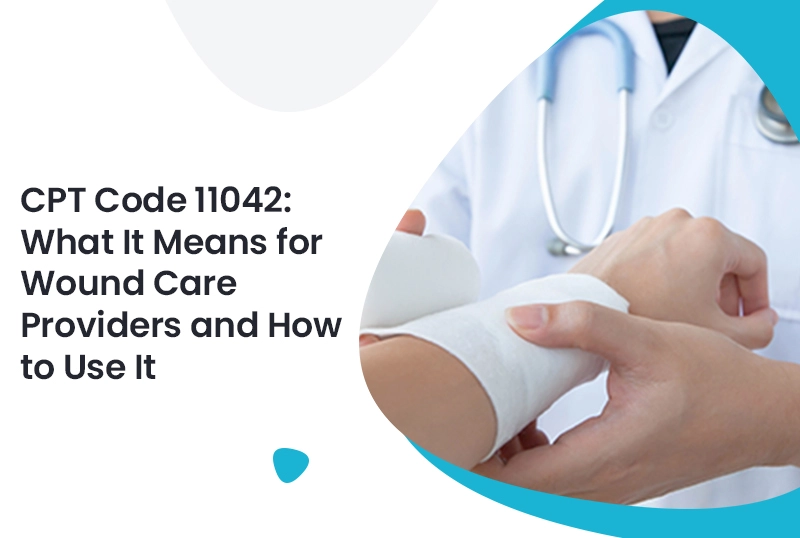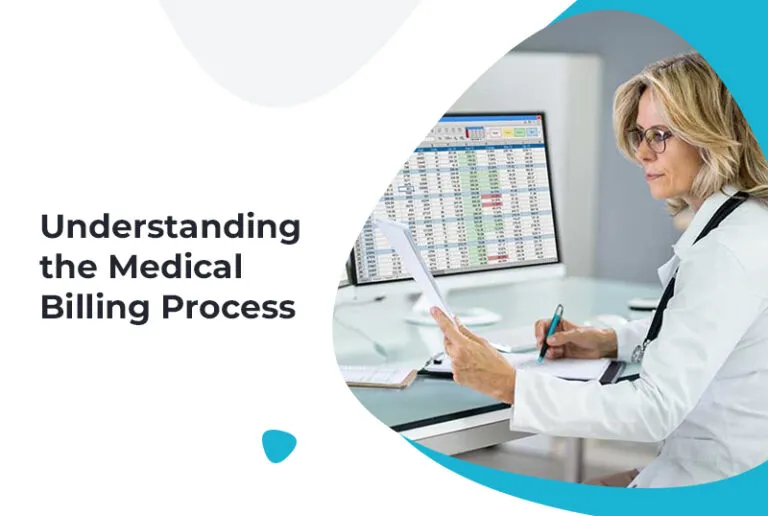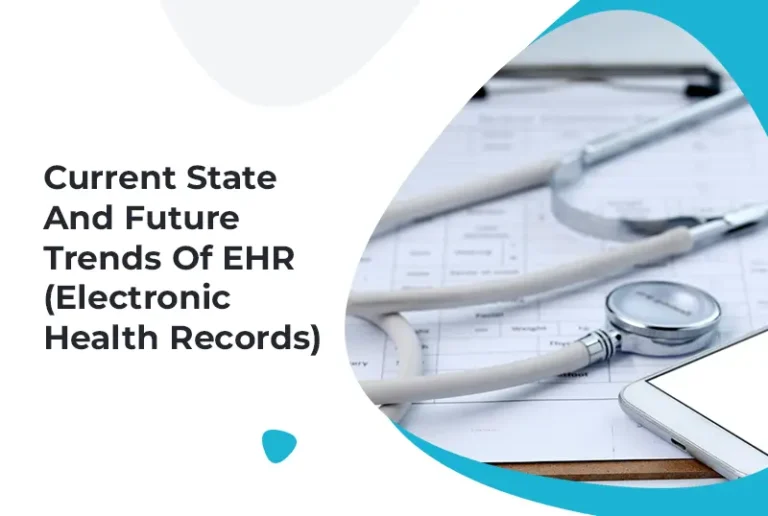Wound care is a critical part of healthcare services, particularly for patients who experience chronic conditions or injuries requiring long-term attention. One of the essential aspects of effective wound care is proper documentation and billing for the services provided. CPT code 11042 plays a significant role in ensuring healthcare providers are reimbursed correctly for wound care procedures. This blog will explore CPT code 11042, what it means for wound care providers, how to use it effectively, and the importance of billing services for medical practices.
Understanding CPT Code 11042
Healthcare providers use CPT code 11042 to bill for the debridement of a wound, specifically for removing necrotic tissue, which is necessary for the healing process. This code falls under the general surgical code for wound debridement, a procedure that removes dead tissue, foreign material, or infected tissue from a wound to prevent infection and promote healing. Providers typically use this code when performing debridement in a medically necessary and comprehensive manner.
Healthcare providers use CPT code 11042 to ensure they receive appropriate reimbursement for the time, skill, and resources involved in providing wound care. Since wound care can be a lengthy and complicated process, billing services medical practices play a crucial role in managing the financial aspects of patient care. These services help maintain accurate billing and ensure providers receive proper compensation for the extensive care they deliver.
How CPT Code 11042 Works
When a healthcare provider performs debridement on a wound, the use of CPT 11042 must meet specific documentation requirements. Providers need to document the procedure in detail, including the type of wound, the method of debridement used, and any additional procedures that were necessary. The primary goal of using CPT code 11042 is to ensure the provider receives reimbursement for the services rendered while maintaining accurate medical records for billing purposes.
It’s important to note that CPT 11042 is not applicable for every wound care scenario. Providers typically use this code for wounds of a certain size or severity that require specialized and thorough debridement. For smaller or less complicated wounds, other CPT codes may be more appropriate, depending on the treatment provided.
Explore further insights—read here: CPT Codes for Mental Health Experts: A Step-by-Step Guide
The Importance of Professional Credential Services for Billing
Accurate billing is not just about using the correct CPT codes—it also requires a professional understanding of the complex rules and regulations that govern medical billing and coding. This is where professional credential services come into play. Providers must keep their certifications up to date and train their staff in the latest billing practices. Credentialing helps providers receive prompt and correct reimbursement from payers, reduce billing errors, and maximize revenue.
With CPT 11042 being a relatively specific code, it’s important for healthcare providers to have a robust billing system in place to manage these types of claims. This ensures that no information is omitted or inaccurately reported, which could delay payment or result in the denial of claims.
How to Use CPT Code 11042 Effectively
To use CPT 11042 effectively, providers need to follow the appropriate steps for documentation, coding, and submission to insurance providers. First, it’s essential to ensure the wound is sufficiently severe to warrant the use of this code. Providers should verify that they record all relevant patient information and confirm that the procedure is necessary for the wound’s treatment. Once the procedure is complete, they can begin the billing process.
The steps for using CPT code 11042 in the billing process are as follows:
- Document the procedure: Include detailed notes on the type of debridement performed, the wound’s characteristics, and any complications.
- Verify the coding: Ensure that CPT 11042 is the appropriate code based on the type of wound and the procedure performed.
- Submit claims: Send the claim to the payer with the necessary documentation to support the use of CPT 11042.
- Follow up: Track claims for denials or requests for additional information, and ensure that the billing process is completed promptly.
Best Practices for Medical Billing and Coding
Wound care providers can benefit from employing best practices when using CPT codes like 11042. Medical billing and coding can be complex, and errors can lead to delayed payments or claim denials. To optimize your billing process and reduce the risk of mistakes, consider the following best practices:
- Train staff: Ensure that everyone involved in the billing process understands CPT code 11042 and other relevant codes.
- Stay up-to-date: Medical billing rules can change frequently. Regular updates and training sessions are essential for staying compliant.
- Use a billing service: For smaller practices, outsourcing to a medical billing service can ensure accuracy and efficiency in submitting claims.
Common Mistakes to Avoid with CPT 11042
Despite its importance, CPT code 11042 is often misused or misunderstood, leading to claim denials. Some common mistakes include:
- Using the code for inappropriate wounds: CPT 11042 is intended for wounds that require extensive debridement. Using it for minor wounds or those that do not require specialized care can result in a denied claim.
- Inadequate documentation: Failing to provide sufficient documentation to support the use of CPT 11042 is a common mistake. Proper documentation is essential for validating the procedure and ensuring reimbursement.
- Not updating coding practices: Medical billing and coding guidelines change over time. Providers who do not stay current with updates to CPT codes may risk using outdated or incorrect codes.
Importance of Medical Billing and Coding for Providers
Medical billing and coding are essential for ensuring that healthcare providers are paid fairly for their services. Incorrect billing can result in delayed or denied payments, which can disrupt a practice’s revenue stream. Providers should work with experienced billing professionals who understand the complexities of coding and the specific needs of their practice.
For example, medical billing and coding specialists can help wound care providers navigate the nuances of using CPT code 11042. They can ensure that the correct code is used and that all necessary documentation is included, improving the chances of claim approval.
Conclusion
CPT code 11042 is an essential code for wound care providers that perform debridement procedures. Understanding how to use this code properly is critical for ensuring accurate reimbursement and maintaining financial health. By leveraging professional credential services, adhering to best practices in medical billing, and staying up-to-date with the latest codes and regulations, healthcare providers can improve their billing process and avoid common errors.
For practices looking to streamline their billing operations, working with a reliable medical billing and coding service is a smart move. Consider outsourcing your billing to ensure compliance, reduce errors, and focus on providing high-quality patient care.
FAQs (Frequently Asked Questions)
- What does this code do?
This code bills for the debridement of a wound, specifically for removing necrotic tissue to promote healing. - Can this code apply to all wounds?
No, providers use this code only for wounds that require extensive debridement. Smaller or less complicated wounds may need different codes. - Why is proper documentation important for CPT 11042?
Proper documentation is crucial to ensure that the procedure is valid and to support reimbursement claims. Inadequate documentation can lead to denials. - What are common mistakes when using CPT 11042?
Common mistakes include using the code for minor wounds, failing to document the procedure properly, and not staying updated on changes to medical billing practices. - How can I improve my practice’s billing process?
Working with a professional medical billing service can help streamline the billing process, reduce errors, and ensure timely payments.







